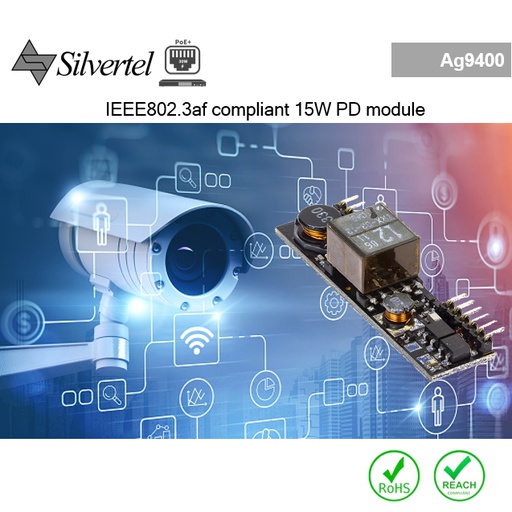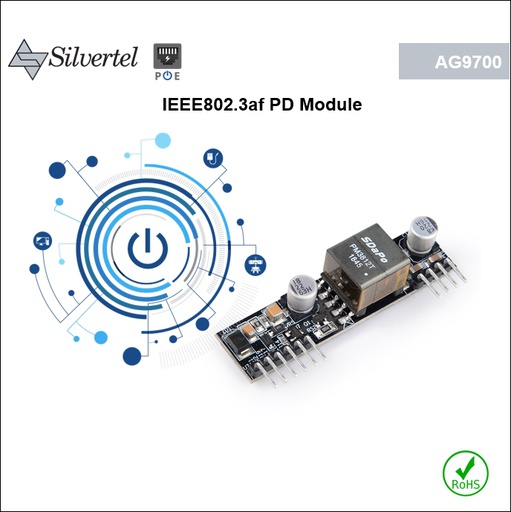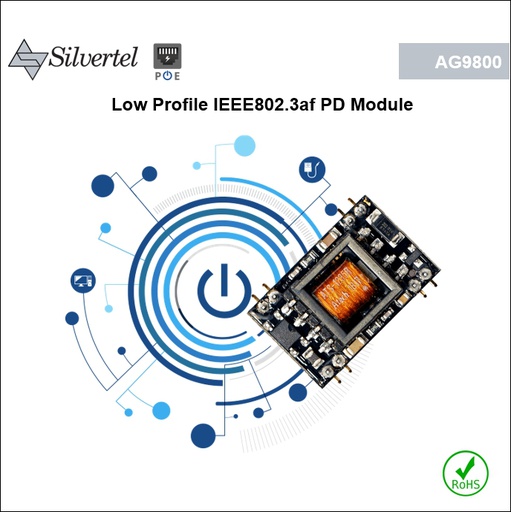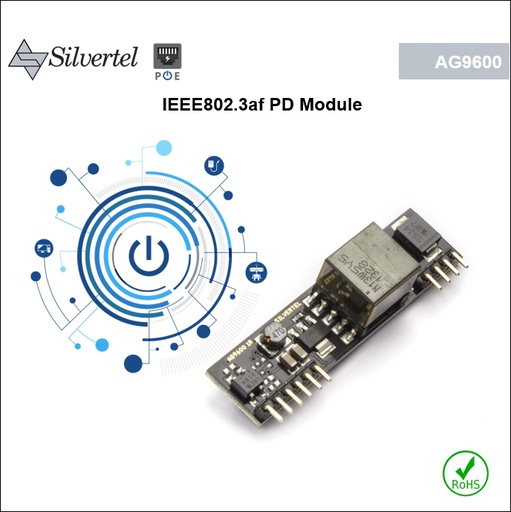The ongoing expansion of PoE-driven IoT networks worldwide comes with the addition of more and more power-hungry devices. Unfortunately, a PoE standard like IEEE 802.3at is only good enough for low-power equipment. It supplies up to 30W at the source over Ethernet, limiting the amount of power available for smart networks and devices. The good news is that the latest standard, 90W PoE; IEEE 802.3bt, expands the use of PoE in new applications. It’s a game-changer in the PoE space!
The 90W PoE; IEEE 802.3bt technology drives high-power infrastructure for smart building systems, safe cities, thin clients, and a lot more. Facility managers and building owners can adopt the standard to future-proof their PoE networks. The outcome for them is lower installation and wiring costs.
Also, cheaper PoE power translates to a higher demand for new smart device support among end-users. All these developments mean expanding business opportunities for contractors in the PoE market.
Now is the Time to Upgrade to Four-Pair 90W PoE
With each passing day, more customers are becoming aware of what’s possible with Ethernet power delivery as per IEEE 802.3bt. As they seek to upgrade their infrastructure accordingly, they’ll be demanding four-pair PoE support from installers. With the new standard, you can maximize PoE power by utilizing all four pairs of the Ethernet cable, instead of just two.
Fortunately, transitioning to the new standard won’t necessarily be a costly affair for users and installers seeking to deliver more power to devices. For starters, standard CAT 5 and 6 Ethernet cables are IEEE compatible as they include four pairs of wires. So, you can add and move devices by moving these cables.
Wiring and equipment costs remain down as there’s usually no need to move AC sources physically.
Expanding PoE Use Cases With the Adoption of High-Power IEEE 802.3bt Infrastructure
The IEEE 802.3bt standard introduces new high-power PoE device types (3 and 4). With type 4, the PoE delivers as much as 90W to the Power Sourcing Equipment (PSE), and 71.3W to the Powered Device (PD). The technology supports a broad spectrum of emerging PoE markets, including:
Safe Cities With PTZ Cameras
IoT pan-tilt-zoom (PTZ) cameras are some of the latest to enter the PoE space, especially in the implementation of smart and safe cities. These devices are power-hungry, demanding up to 90W in some cases. Pre-IEEE 802.3bt standards couldn’t deliver that amount of power.
Besides, the latest standard supports both single-signature PDs and dual-signature PDs. It’s imperative to support both architectures to enable more applications to run on high-power PoE. With dual-signature PD, you can have the infrastructure supporting two separate loads, each belonging in a different power class.
For example, you could build a PTZ surveillance camera system with dual-signature PD for deployment in a cold environment. In that scenario, you’d connect one pair of the PoE cable wires to power the camera and the other to the heater.
Smart Building Systems With PoE-Powered LED Lighting
Smart LED lights integrated with building management systems have been around for a while. However, the inability to deliver maximum power via PoE meant that users couldn’t always count on the infrastructure to generate bright light.

For example, facilities had to utilize traditional AC wiring to power 90W LED lights. IEEE 802.3bt is changing that. You can now deliver up to 90W over PoE infrastructure to smart LED lighting systems with the new standard.
Also, the latest changes in Maintain Power Signature (MPS) requirements will bring efficiency to high-wattage PoE LED lighting applications. As per the previous standard, these use cases registered substantial power wastage due to the large number of ports involved.
By incorporating the IEEE 802.3bt in their 90W PoE LED lighting architecture, building owners or managers can save significant amounts of energy. That’s because the standard has reduced the minimum standby power (while the light is off) to 20 mW. The value is 10 times better than what other existing standards allow (200 mW).
High-Performance Wireless Access Points

The demand for high-performance Wireless Access Points (WAPs) keeps rising, especially with the increasing demand for applications that meet the IEEE 802.11ax and 802.11ac Wave 2 standards. The market for such equipment is growing, from heavy-usage homes to workplaces that utilize bandwidth-hogging applications.
In some of these use cases, the WAPs require more than 30W or 60W to function. Also, they may need up to 90W or more to deliver pass-through power to an endpoint, such as a laptop.
Intercoms, TVs, and Video Conferencing
With 90W of PoE-delivered power, users can operate power-hungry intercoms, LED displays, VoIP phone systems, and much more on their existing Ethernet infrastructure. Digital signage projects and IR lighting designs are also excellent opportunities to save on installation costs while upgrading to the IEEE 802.3bt standard.
Integrators and Installers: How to Support Demand for 90W PoE Use Cases
PoE use cases will keep expanding as building owners, facility managers, and end-users future-proof their networks in readiness for new power-hungry devices and applications. This trend implies a growing PoE market for contractors to exploit.
However, as an installer or integrator, these customers expect you to deliver standard-compliant and futuristic solutions, from PoE midspans to switches and controllers. One way to consistently meet their expectations is by providing backward compatible equipment.
As the IEEE 802.3bt standard catches on, many customers are still using non-PoE network equipment. For example, a user may already have a non-PoE switch in place. If all they want is a few extra high-power PoE ports, you can solve their problem by providing a 90W midspan PoE hub. The device is compatible with a non-PoE switch.
The benefit to the customer can be hundreds of dollars in savings.
Adopting the 90W PoE; IEEE 802.3bt standard is necessary for organizations or users expanding Ethernet networks that comprise higher-powered devices. Thankfully, upgrading with backward-compatible 90w Ethernet power sources is relatively cheap since owners don’t have to overhaul their entire non-PoE infrastructure at once. Also, installers can cut installation costs and time by delivering such power over existing CAT 5 (or higher) cables.
In a nutshell, 90W PoE means affordable power for more power-hungry devices and more business to PoE contractors—a win-win for all!
![[Ag6800] Ag6800 PSE Module, High Power, IEEE802.3bt compliant, complements Ag6800](/web/image/product.template/48607/image_512/%5BAg6800%5D%20Ag6800%20PSE%20Module%2C%20High%20Power%2C%20IEEE802.3bt%20compliant%2C%20complements%20Ag6800?unique=a8f2d89)
![[Ag9120-S (NRND)] Ag9120-S PD Module, Isolated DC-DC converter, IEEE802.3af compliant, 5V or 12V Output](/web/image/product.template/48610/image_512/%5BAg9120-S%20%28NRND%29%5D%20Ag9120-S%20PD%20Module%2C%20Isolated%20DC-DC%20converter%2C%20IEEE802.3af%20compliant%2C%205V%20or%2012V%20Output?unique=3809995)
![[Ag9205-S] Ag9205-S PD Module, High Efficiency, Isolated DC-DC Converter](/web/image/product.template/48611/image_512/%5BAg9205-S%5D%20Ag9205-S%20PD%20Module%2C%20High%20Efficiency%2C%20Isolated%20DC-DC%20Converter?unique=b68cdb9)




![[AG5810] PD Module, 60W, IEEE802.3bt Compliant, 12V/24V](/web/image/product.template/48581/image_512/%5BAG5810%5D%20PD%20Module%2C%2060W%2C%20IEEE802.3bt%20Compliant%2C%2012V-24V?unique=4fdaa6e)

![[Ag6100-S (NRND)] PSE Module, 1-Channel, IEEE802.3af & at compliant](/web/image/product.template/48603/image_512/%5BAg6100-S%20%28NRND%29%5D%20PSE%20Module%2C%201-Channel%2C%20IEEE802.3af%20%26%20at%20compliant?unique=0fd7f48)
![[Ag6120] PSE Module, 1-Channel, IEEE802.3af, at & bt compliant](/web/image/product.template/48604/image_512/%5BAg6120%5D%20PSE%20Module%2C%201-Channel%2C%20IEEE802.3af%2C%20at%20%26%20bt%20compliant?unique=58b34b3)